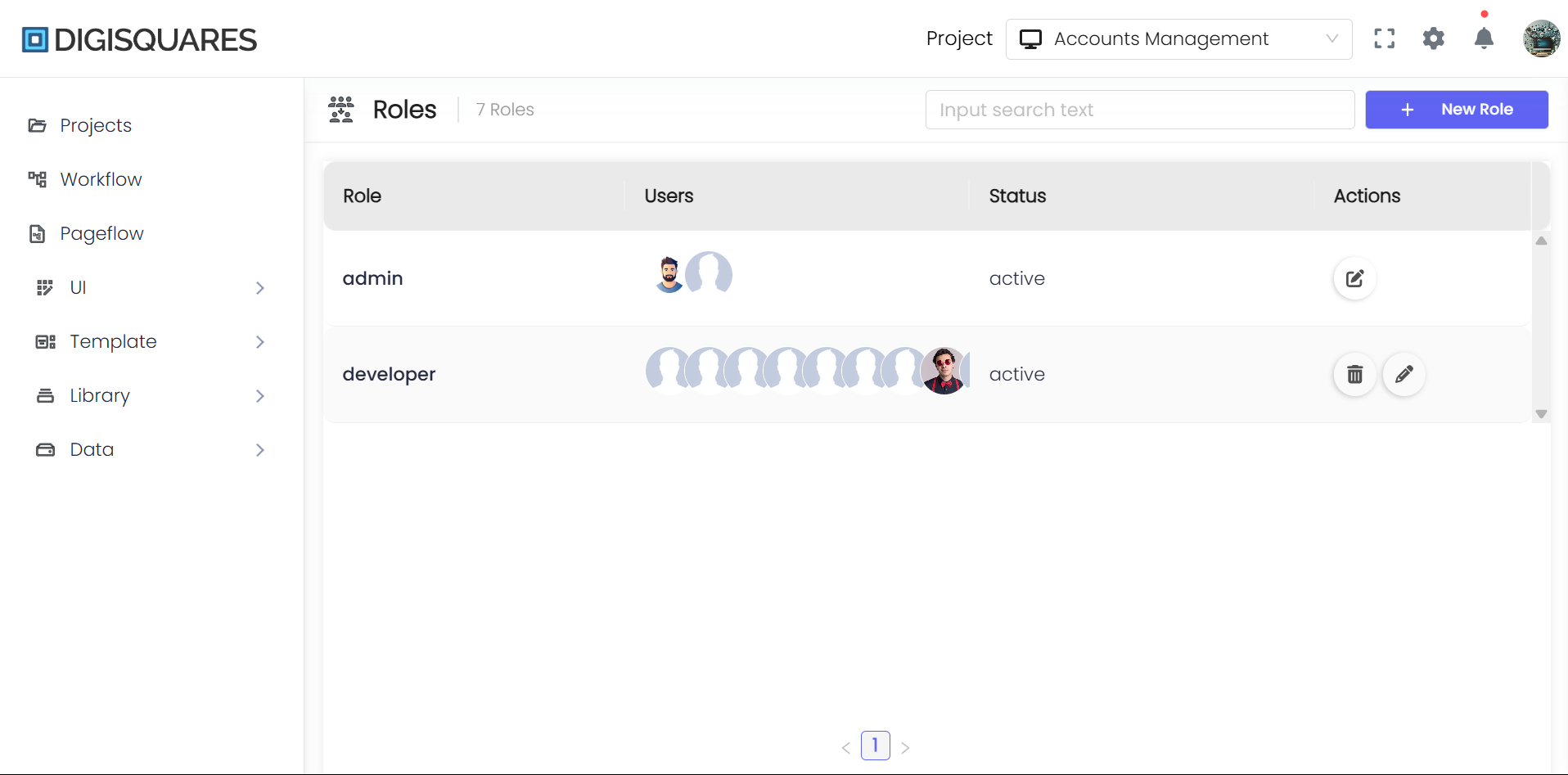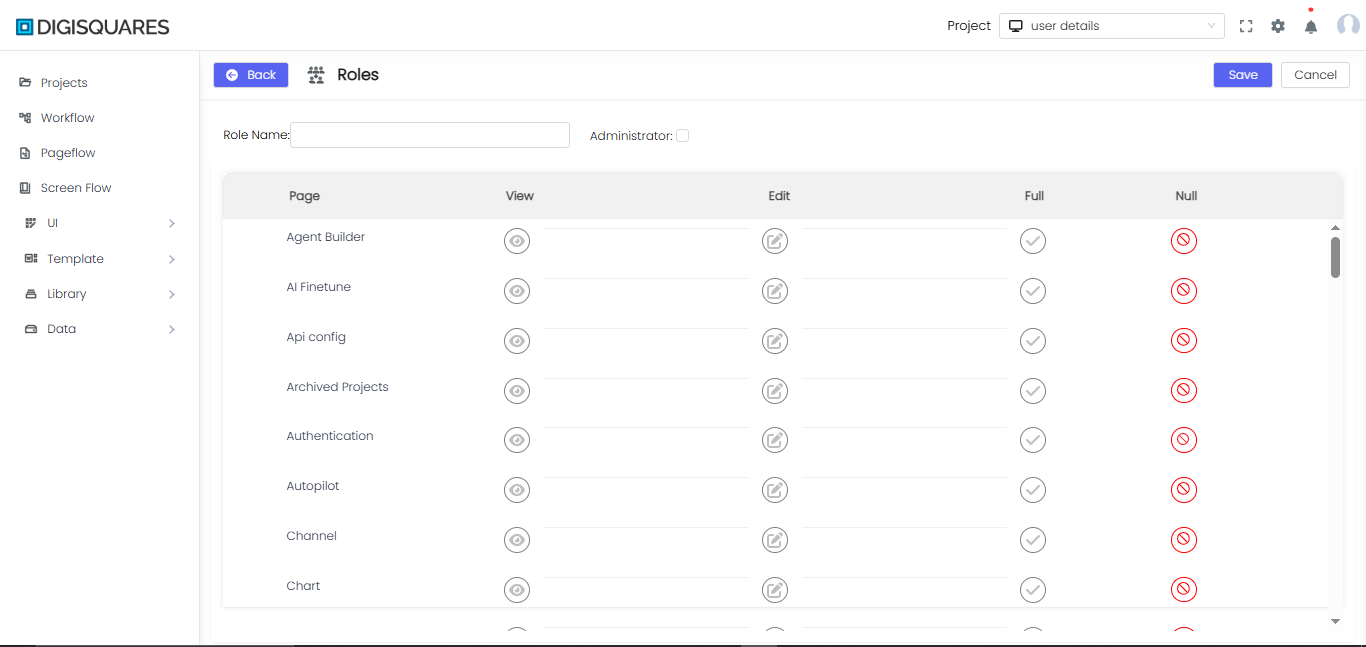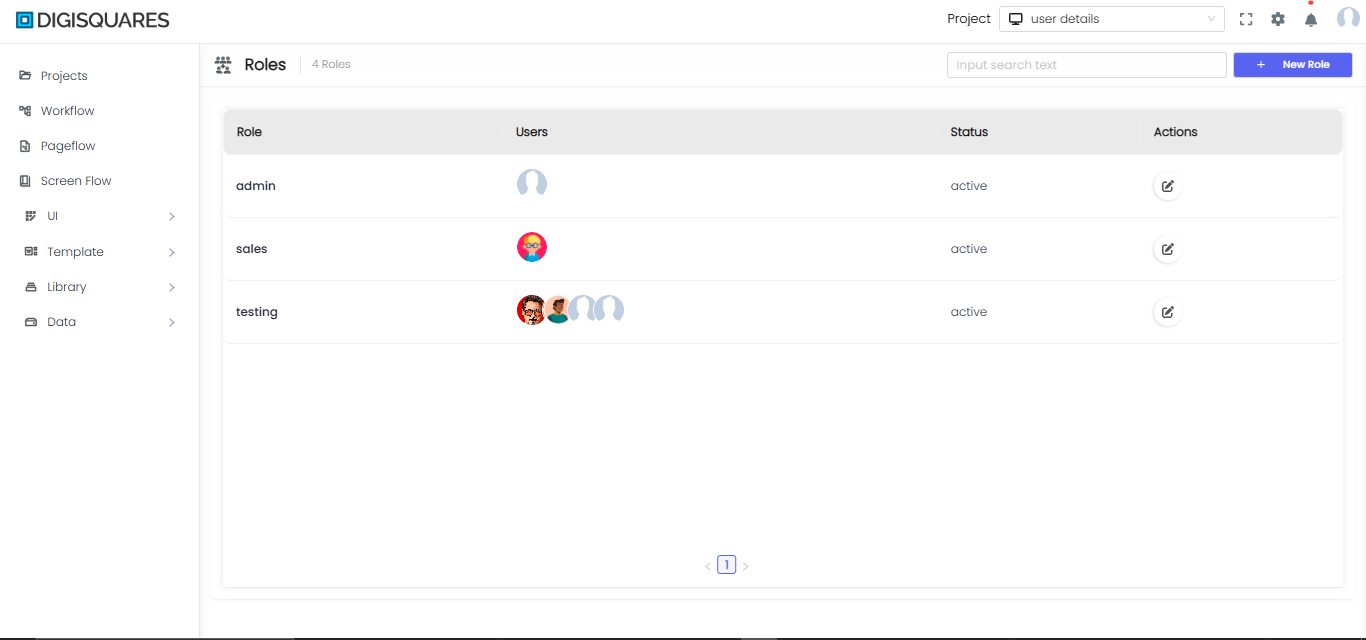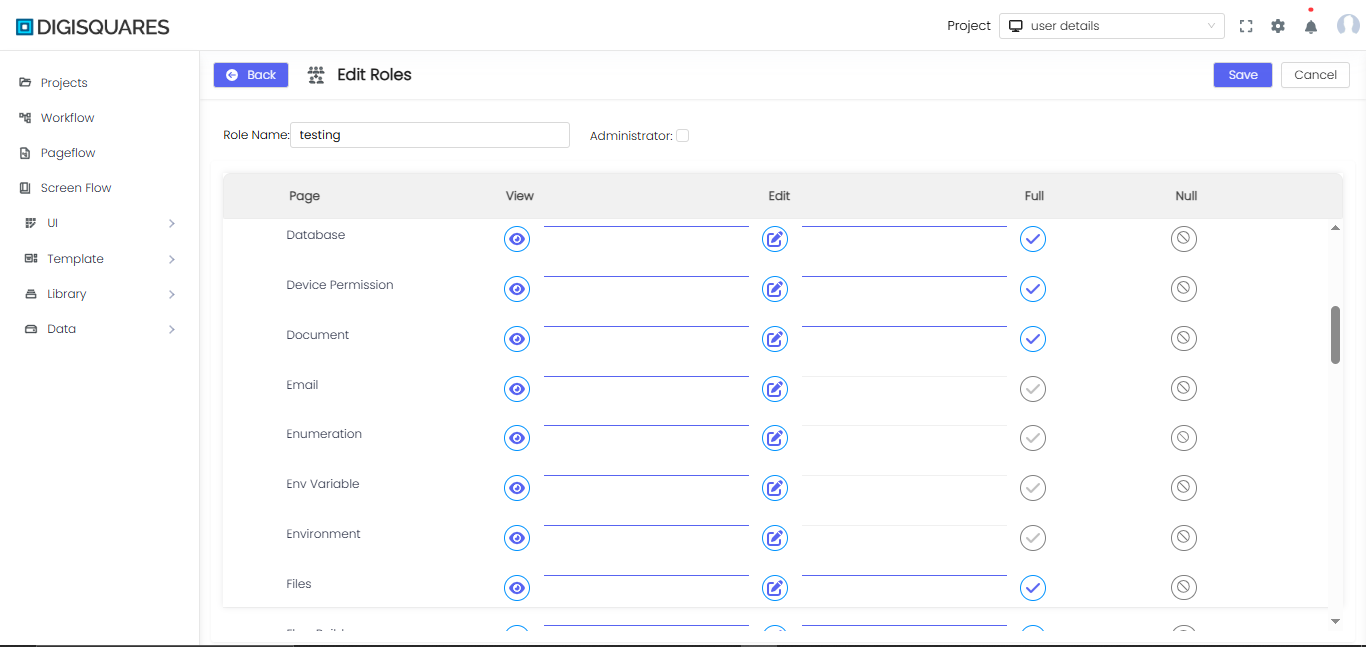Role Management
The Role Management page in the Digisquares platform enables administrators to create, view, and manage user roles within the system. Each role is defined by a specific set of permissions that control access to various pages and functionalities in the project. Roles can be customized with different privilege levels, such as view, edit, or full access, making it easy to assign appropriate access rights for diverse user types.

Features of the Role Management Page
Role List View
Roles are presented in a table format, providing a clear overview of each role's details:
- Role: Displays the name of the role (e.g.,
Admin,Tester,Developer). - Users: Lists users assigned to each role, helping to identify role utilization at a glance.
- Status: Indicates if the role is active or inactive.
- Actions: Includes icons for editing role permissions or deleting a role if it is no longer needed.
New Role Creation
Administrators can click the + New Role button located at the top right of the page to create a new role. This action opens the role creation page, where the admin can define the role's name and associated permissions to control platform access.
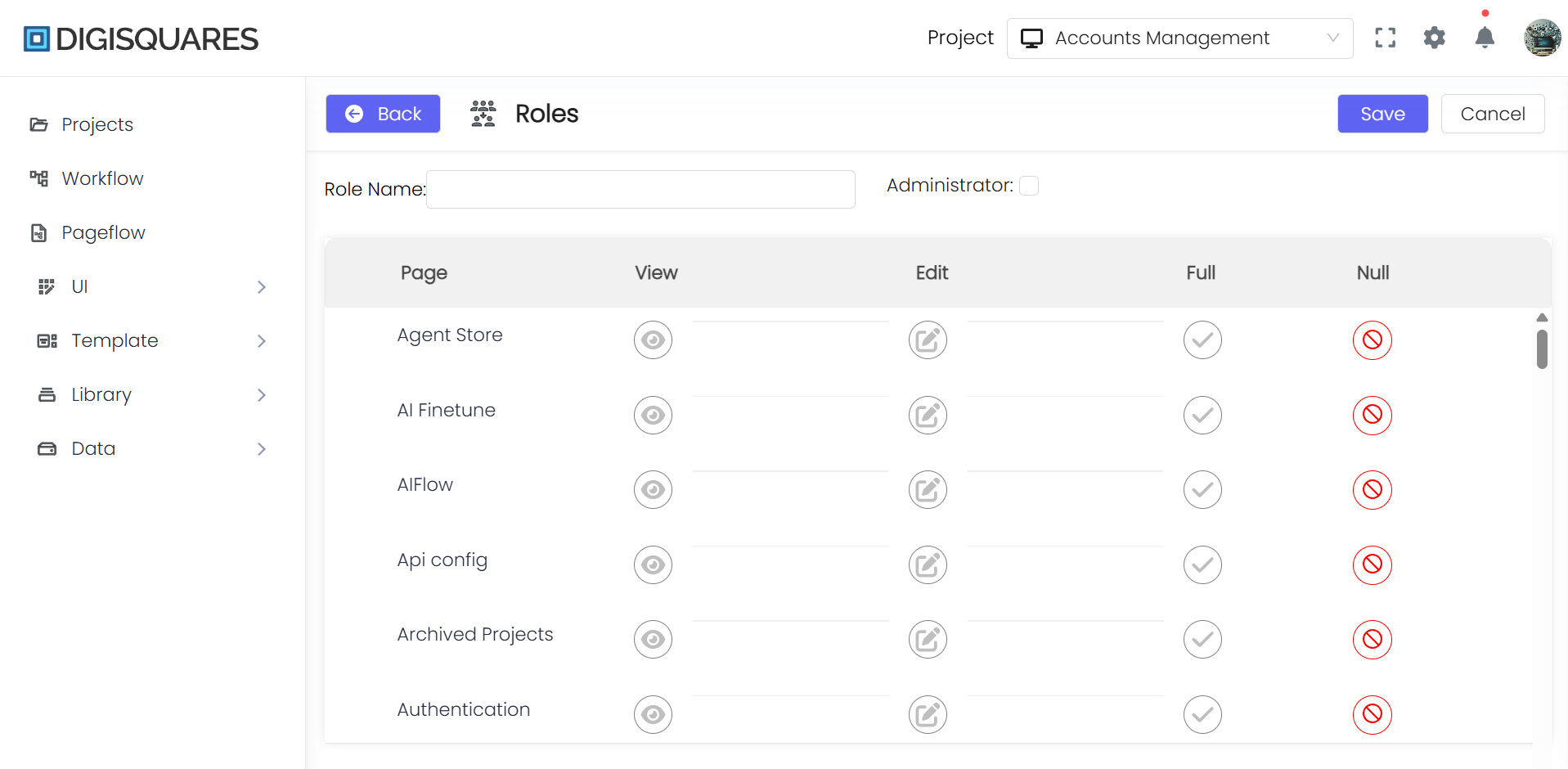
Role Creation Page
The New Roles page allows administrators to create and edit roles with tailored permissions. This page is divided into sections for defining access rights to various pages and features.
Role Information
- Role Name: A required field where the admin specifies the name of the role, such as Admin, Tester, or Developer.
- Administrator Checkbox: When enabled, this setting grants full system control to the role, providing access to all features and functionalities without restrictions.
Example Chart Visualizations
Here are some example visualizations created using Digisquares:
Permissions Table
The permissions table provides an interface for setting access levels to each page in the system. The available permission options are:
- View: Allows the user to view the content of the page.
- Edit: Grants editing rights for the page.
- Full: Provides complete control over the page, including viewing, editing, and any additional privileges.
- Null: Removes all access to the page.
| Page Name | View | Edit | Full | Null |
|---|---|---|---|---|
| Device Permission | ✔️ | ❌ | ❌ | ❌ |
| Document | ✔️ | ✔️ | ❌ | ❌ |
| ✔️ | ✔️ | ❌ | ❌ | |
| Enumeration | ✔️ | ❌ | ❌ | ❌ |
| Env Variable | ✔️ | ✔️ | ❌ | ❌ |
| Environment | ✔️ | ✔️ | ✔️ | ❌ |
| Evaluation | ✔️ | ❌ | ❌ | ❌ |
This table allows admins to assign permissions for each page based on the role’s needs. For instance, an admin might have full access to critical sections like Document, while a tester might only have view access.
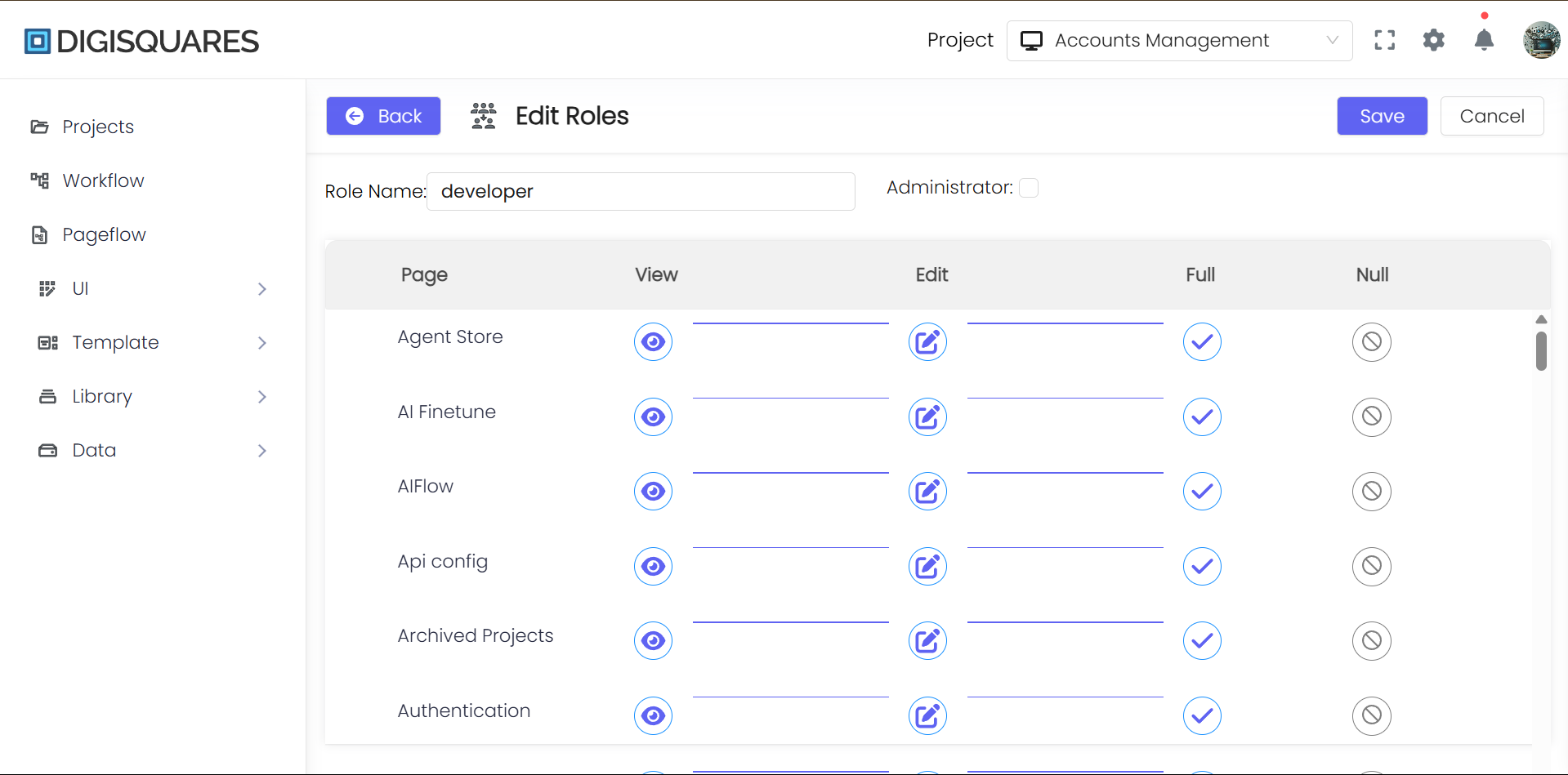
Example:
In the role creation page, admins are configuring access for pages such as Device Permission, Email, and Document. For instance, a Developer role might have Edit access to Document and View access to Device Permission, while an Admin has Full access to all pages.
Benefits of Role Management
Benefits of Role Management:
- Security: Restrict access to sensitive pages based on user roles to prevent unauthorized actions.
- Efficiency: Assigning roles ensures that users have only the necessary permissions for their tasks, streamlining their workflow.
- Customizable: Roles can be tailored to specific needs, such as read-only access for testers or full control for admins.
Tips for Setting Up Roles
- Review Permissions: Before saving a new role, carefully review all assigned permissions to ensure they meet the requirements for users in that role.
- Utilize the Administrator Checkbox: Use the Administrator checkbox sparingly, as it grants full system control. This setting is ideal for roles that require comprehensive access, such as senior admin roles.
- Regularly Update Roles: Revisit and adjust role permissions periodically to reflect changes in the project structure or user responsibilities.
Conclusion
The Role Management page provides administrators with a centralized tool to assign and manage user access within the Digisquares platform. By creating roles with defined permissions, admins can ensure that users only have access to the resources necessary for their roles, enhancing security and promoting efficient workflows.
With the ability to create, edit, and assign roles, the Role Management feature is a powerful asset for maintaining order and control within the platform.
